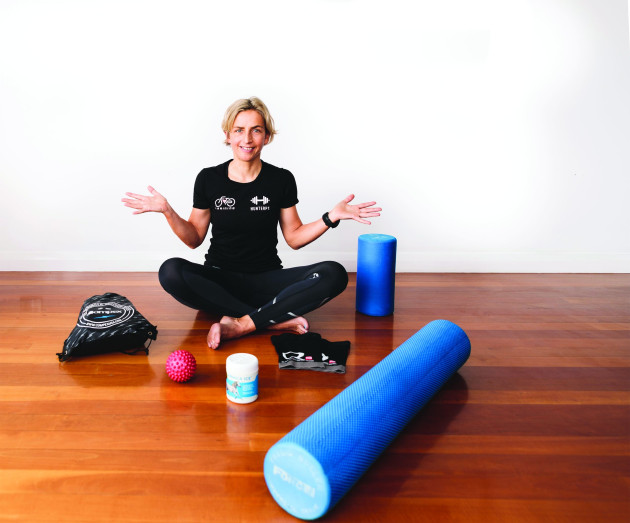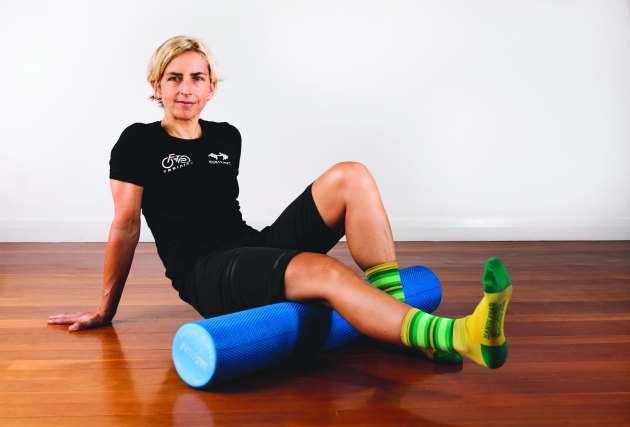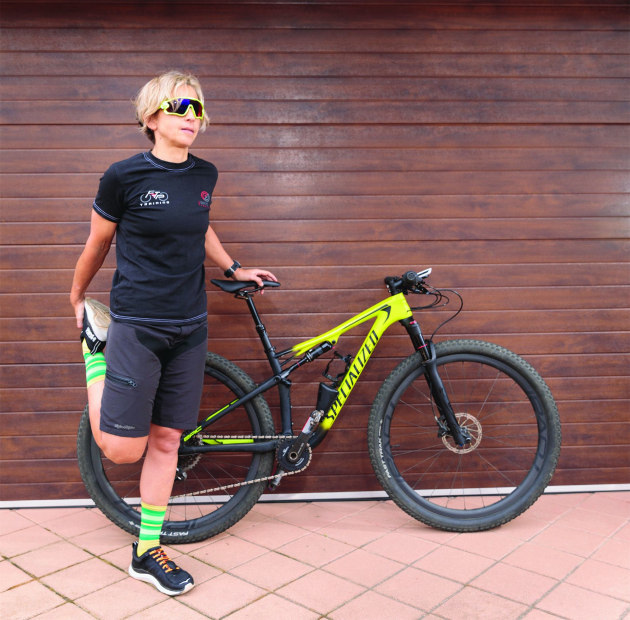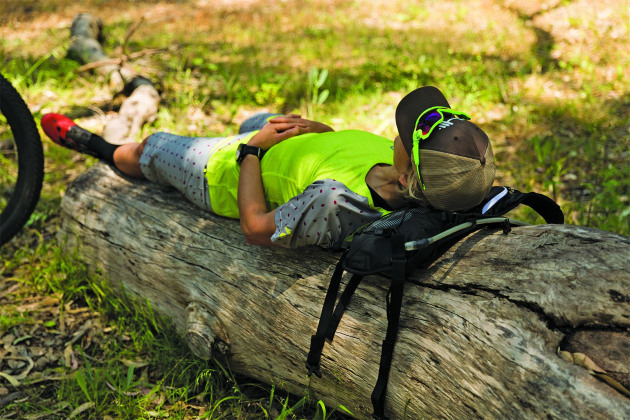Recovery techniques: Are they worth all the fuss?
Each person tends to have their ‘go to’ modality which they swear by. In this article I am going to take an in-depth look at some of the more popular recovery techniques and a few of the more left field techniques to see what really works and figure out where we should be spending our time and money.
Firstly let's take a look at why we should be incorporating some form of post ride recovery into our daily schedule. To become a faster rider you need to expose your body to physical stresses. These may be in the form of riding, strength training or some kind of cross training but in all instances after these stresses the human body needs to recover.
The ability to recover adequately allows for another level of high performance in your next session. Without proper recovery, it will take you longer to recover and therefore longer before you can hit your next quality session.
When you exercise and train it will lead to some level of inflammation, delayed onset muscle soreness (DOMS) and increased perceived fatigue depending on how hard your session was.
Recovery is a diverse process that involves the healing of the microtraumas that are caused to muscles during training and restoring chemical and hormonal balances in the body. A rider should think of recovery as the start of the preparation for the next ride but with so many different recovery techniques out there which one is best and how long should we spend ‘recovering’?
Ice baths
An ice bath or cold water immersion is a bath in water typically between 5-15 degrees. The hypothesis is that the cold water reduces body temperature and therefore alleviates inflammation and muscle damage.
This area of sports recovery has been widely studied over the past 10 years. A 2016 review (i) of nine published articles in this field concluded that cold water immersion is only slightly better than passive recovery (meaning doing nothing except relaxing) in regards to immediate effectiveness and delayed effectiveness.
However to get the most from this form of recovery, it was noted that it's the duration of time spent in the water rather than how cold it actually is. An easy-to-remember range of 11 to 15 minutes of immersion in water temp of 11 to 15 degrees provided the best results. It was also noted that whole body cooling was more effective than just legs alone even if they seem to hurt the most!
The physiological markers of recovery were no different 24 hours after an intense bout of exercise, using cold water immersion compared to passive recovery, but what was interesting was that the subjective ratings of the athletes’ perception of how recovered they felt was much higher after the cold water immersion.
In fact, the most recent published studies show that cold water immersion is actually counterproductive to building muscle, so if you do use this protocol make sure you are using it to help recovery for another hard session. But if you are trying to maximise muscular gains in the gym, then leave out the post gym ice bath.
Pros: Easy to do if you live near the Southern Ocean.
Cons: Cold water from the tap is not cold enough, so practical applications of this may be difficult for most. Fully immersing in water that is 11 to 15 degrees also tends to be unpleasant!
Foam Rolling
Using a foam roller to target specific muscles that have just been trained such as quads, glutes and hamstrings is a good way to stimulate the blood flow to help the body clear inflammation.
A recent meta study of seven studies (ii) investigating post exercise foam rolling found that it was effective at reducing DOMS and 66% of the participants experienced accelerated recovery using a foam roller.
However, do bear in mind that when you exercise you create small micro traumas in the muscles and connective tissues. The DOMS is a response to these small micro traumas.
Now imagine your muscles are covered in tiny wounds and someone offers to pummel them with a vigorous massage, the resounding answer would be ‘no thanks’. So keep this in mind with post exercise foam rolling (or massage for that matter), be gentle and keep within your pain threshold.
If you decide foam rolling is for you, then there are a few things to consider when purchasing a foam roller.
Long or short? Long are better as they have more applicable uses but if you are travelling often and want to take the roller then a short foam roller will also suffice.
Hard or soft or knobbly? The firmness will really depend on what you can tolerate, the knobbly ones are pretty hard to tolerate for most people so I wouldn’t recommend one of those unless you have been foam rolling for a while and find that the regular one is not beneficial.
Pros: Cheap and easy to use.
Cons: Easy to mindlessly roll. Do not foam roll areas of direct pain, do not foam roll your lower back, do not foam roll your IT Band, it is not a muscle. If in doubt get some professional advice!
Massage
Post exercise massage is one of the most sought after modalities to enhance recovery. At many of the bigger mountain bike races you will see tents offering post race massage, but are they providing the benefit that you think they are?
A meta study analysing 22 studies (iii) of massage and post exercise recovery found that the most effective massages were actually rather short in duration (no more than 12 minutes) and were most effective after high intensity exercise.
Another point worth noting is that no deep tissue massages were performed but rather more stroking and kneeding massage techniques. There were still positive effects from the massage after strength sessions and endurance sessions, but the benefits were not so pronounced.
Pros: Just lay there and let someone else do all the hard work for you!
Cons: Not all massages are created equal. Sometimes finding a good masseuse can take a bit of time.
Stretching
The practice of stretching is incredibly common with the goal to reduce muscle soreness and reduce muscle stiffness.
Research has shown that stretching does nothing to reduce muscle soreness however it is effective in increasing parasympathic nervous system activity. This helps the body rest, digest and recover.
Tight muscles may not actually need stretching, these muscles might be tight because they are fatigued, overworked or weak. Stretching definitely will not provide a solution to this tightness but rather try using dynamic mobility and strengthening in this scenario.
Pros: Free
Cons: It doesn’t work in the way you think it does.
Compression Pants
The makers of compression garments must be doing something right as the market is worth more than $2 billion this year!
The theory behind compression garments is that they increase circulation and potentially facilitate the removal of metabolite waste products from the muscles. The garments compress the smaller veins and force the blood to go to the deeper veins which transport the blood back to the heart.
There is inconsistent evidence in the research papers with regard to this however a study analysing 12 papers (iv) on this topic showed that there is evidence to show that compression pants do reduce the severity of DOMS, however there isn’t an agreed protocol of how long and when to wear them. There are no negative impacts on recovery from wearing compression pants, so if you already have a pair, don’t go throwing them out!
Pros: Relatively cheap.
Cons: For compression pants to be effective they need to be tight, with a graduated compression with the greatest pressure at the lower leg. So getting the right fit can sometimes be tricky.
Arnica Ice
I was introduced to this product through a South African friend of mine, who was an ultra marathon runner. Apparently it is a ‘go to’ recovery product for long distance runners in South Africa and purchased in large tubs from vets at the equivalent of $10 per large tub. So when she brought me back a tub, I thought I should give it a go.
I think that a human version is now available, it is probably five times the price though!
Arnica Ice is a cooling gel that according to the label 'is to aid in the relief of stiffness and soreness in muscles.' It contains Arnica oil, menthol, camphor and witch hazel.
There isn’t any research on this exact product but the studies on the efficacy of topical Arnica showed at best only a very modest effect. Interestingly in one study, participants in the topical Arnica group reported less pain as assessed through muscle tenderness post-exercise. However the application of topical Arnica did not affect any performance assessments or markers of muscle damage or inflammation.
Pros: Cheap, feels good.
Cons: The science doesn’t stack up, it may feel nice but there is little evidence that it really helps with recovery.
EMS – Electrical Muscle Stimulator
The theory is that Electrical Muscle Stimulation can speed up recovery by improving blood flow in the targeted muscles. The electrodes are placed on the muscles and cause them to twitch, which is believed to work the same way a massage does by forcing blood to flow through the muscle.
A study in the Journal of Strength and Conditioning analysed 13 studies (v) researching the efficacy of EMS with regards to soreness, muscle damage indicators and performance.
Compared to doing nothing, the EMS worked with athletes rating their level of perceived soreness as improving. EMS also worked well at enhancing blood flow however it was noted that other modalities such as massage were just as effective as EMS.
Pros: Can be used for other modalities such as pain relief and injury recovery.
Cons: Expensive, practice needed to get the settings just right. Too much EMS and you might end up even more sorer!
Recovery Pump Boots
These are a set of boots that cover your entire leg although you can get them for arms and hips as well. The boots inflate and use compressed air to pulsate and massage your legs.
This pulsing starts at the feet and progressively moves up the leg. The science behind this is that it is helping to move fluid and metabolite waste product from your legs to help speed up recovery.
There isn’t a great deal of research published on the effectiveness of these, three small studies found that the boots were effective whilst one study found that the boots had no effect.
A massage could have the same effect as the boots but the availability of a massage therapist just when you want one is hard to come by. Light recovery should, in theory, have the same effect but sometimes the rider is too sore or too tired to even contemplate anything apart from chilling out.
Pros: They feel great, your own personal masseuse!
Cons: Expensive, need electricity so can’t be used everywhere.
The take away from my research into the topic of recovery is that there is still a lot of research to be done in this space however there is plenty of anecdotal evidence out there to support whatever modality of recovery you choose.
The most effective form of recovery I haven’t listed is sleep and should should the priority for everyone. Good sleep quality is a recognised predictor of physical heath, mental health and overall wellness. The relationship of sleep quality to exercise recovery can be viewed in three ways:
1) Sleep length (noting that most people need 7-8 hours sleep per night, but some people lie outside these norms and need more or less).
2) Sleep quality (number of times awake, how long it takes to get to sleep).
3) Sleep schedule (matching your bedtime and wake up times to the natural circadian rhythm of your body).
The better you fare in each of these parameters, the better your overall quality of sleep.
So there you have it! After all that it is sleep that provides the foundation of recovery.
Good night all, I’m off to bed!









